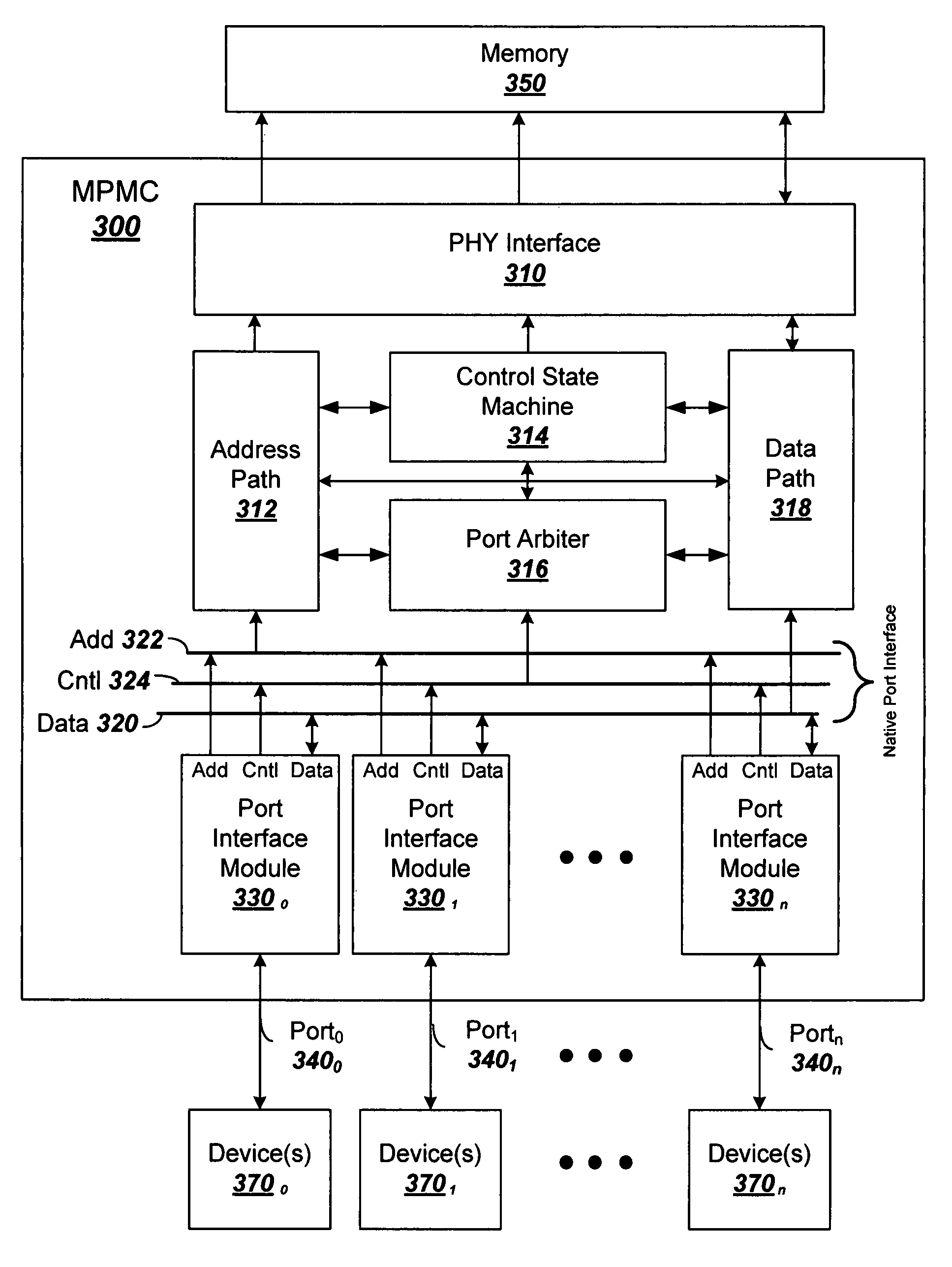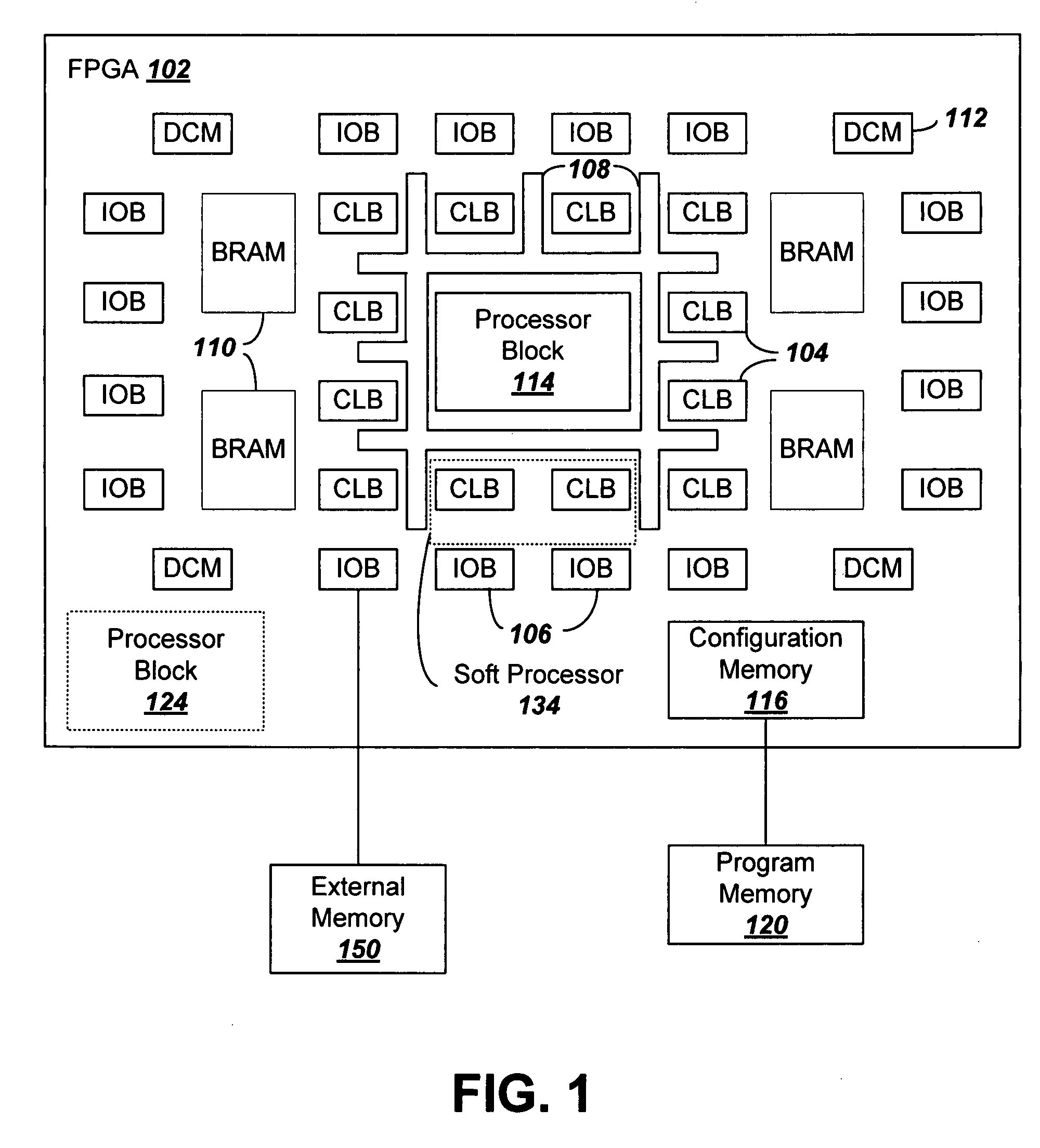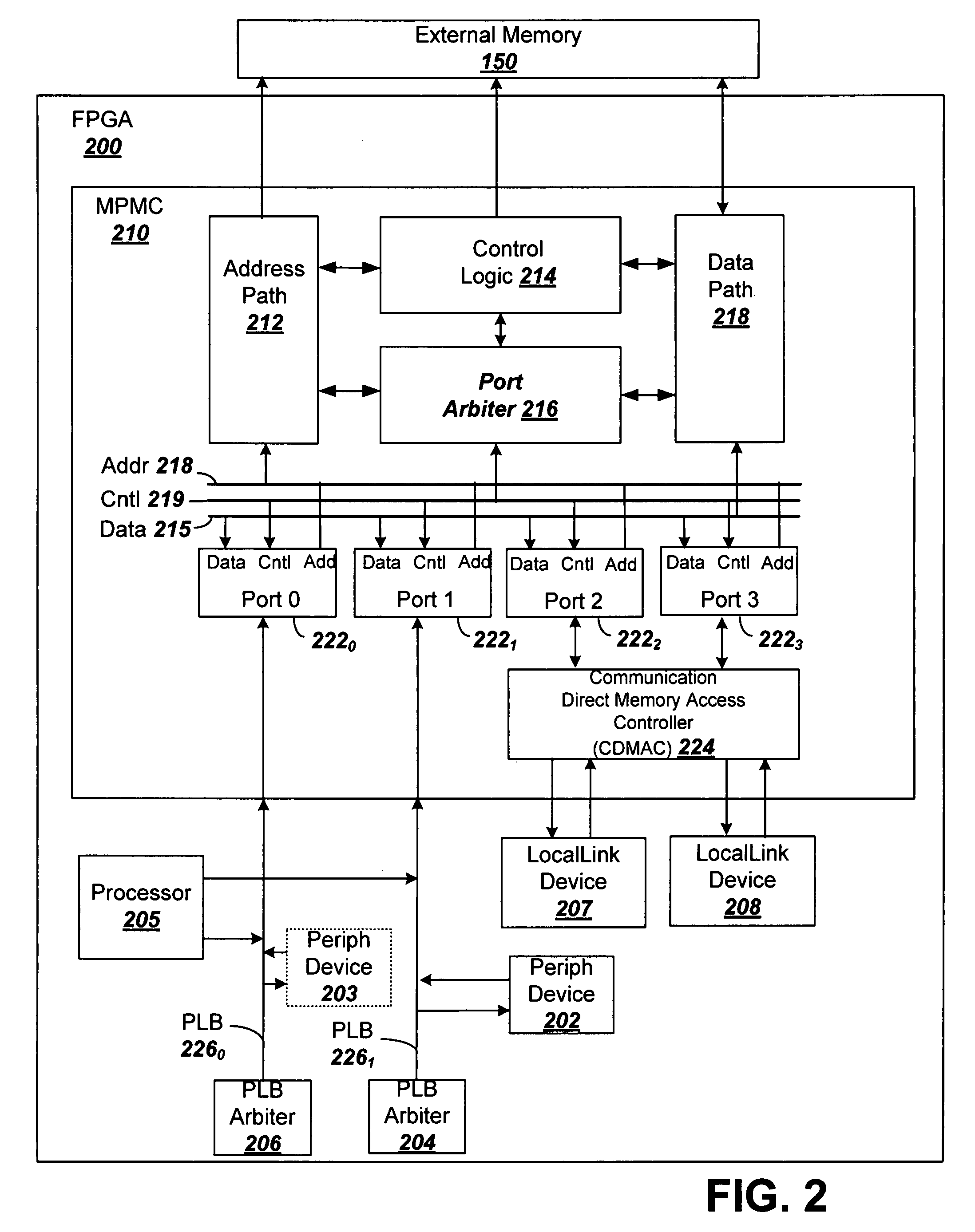Port interface modules (PIMs) in a multi-port memory controller (MPMC)
a memory controller and multi-port technology, applied in the field of multi-port memory controllers, can solve the problems of current systems suffering performance degradation, current mpmc designs have performance issues, and overhead may not allow the full bandwidth capabilities of memory to be utilized, so as to efficiently implement the mpmc based system topology and the effect of high bandwidth for devices
- Summary
- Abstract
- Description
- Claims
- Application Information
AI Technical Summary
Benefits of technology
Problems solved by technology
Method used
Image
Examples
Embodiment Construction
MPMC Overview
[0047]FIG. 2 is a block diagram depicting an exemplary FPGA 200 configured as a multi-port memory controller (MPMC) 210. The MPMC 210 includes general ports 2220 through 2223 (collectively referred to as ports 222). MPMC ports 222 may be connected to peripherals by a system bus, such as Processor Local Buses (PLBs) 2260 and 2261. Processor 205 and other peripheral devices 203 and 202 are shown connected to ports 2220 and 2221 by PLBs 2260 and 2261. PLB arbiter 206 provides bus arbitration for the peripherals on bus 2260, while PLB arbiter 204 provides arbitration for bus 2261. A communication direct memory access controller (CDMAC) 224 can provide a LocalLink to devices 207 and 208 over other ports, such as ports 2222 and 2223. An example of a LocalLink device is a Gigabit Ethernet Media Access Controller (GEMAC). The CDMAC 224 has ports configured to communicate with the devices 207 and 208 over a non-shared interface (e.g., a streaming interface to a direct memory acc...
PUM
 Login to View More
Login to View More Abstract
Description
Claims
Application Information
 Login to View More
Login to View More - R&D
- Intellectual Property
- Life Sciences
- Materials
- Tech Scout
- Unparalleled Data Quality
- Higher Quality Content
- 60% Fewer Hallucinations
Browse by: Latest US Patents, China's latest patents, Technical Efficacy Thesaurus, Application Domain, Technology Topic, Popular Technical Reports.
© 2025 PatSnap. All rights reserved.Legal|Privacy policy|Modern Slavery Act Transparency Statement|Sitemap|About US| Contact US: help@patsnap.com



